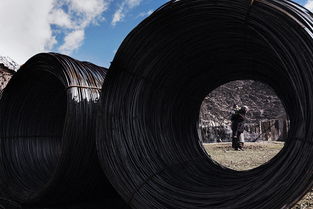Content:
Introduction: Fishing near the shore can be an exhilarating experience, offering anglers the chance to catch a variety of fish species in a more accessible environment. Hand竿 fishing, also known as rod and reel fishing, is a popular method for nearshore fishing due to its simplicity and effectiveness. In this article, we will delve into the essential techniques for nearshore hand竿 fishing, providing you with the knowledge to become a more successful angler.
Choosing the Right Equipment: The first step to successful nearshore hand竿 fishing is selecting the appropriate equipment. Here are some key considerations:
a. Rod: Choose a rod that is suitable for the type of fish you are targeting. A lightweight, medium-action rod is ideal for nearshore fishing, as it allows for better sensitivity and control.
b. Reel: A spinning reel is often preferred for nearshore fishing due to its ease of use and versatility. Ensure that the reel is properly matched to your rod and has enough line capacity for the fish you are targeting.
c. Line: Use a monofilament line with a breaking strength that matches the size of the fish you expect to catch. A line thickness of 6 to 12 pounds is generally sufficient for most nearshore species.
d. Lures and Bait: Select lures or bait that mimic the natural prey of the fish you are targeting. For example, if you are fishing for bass, use lures that resemble small fish or crayfish.
Locating Fish: Understanding where to fish is crucial for successful nearshore hand竿 fishing. Here are some tips for locating fish:
a. Tides: Pay attention to the tide schedule and fish during the periods when fish are most active. High tide and low tide are often the best times to fish, as fish tend to move into shallow waters to feed.
b. Structure: Look for natural or artificial structures such as rocks, reefs, and piers, as these areas often attract fish. These structures provide cover and food sources for fish.

c. Currents: Use the current to your advantage by casting into areas where the current is strongest. Fish often congregate in these areas to feed.
Casting Techniques: Proper casting techniques are essential for successful nearshore hand竿 fishing. Here are some tips:
a. Backcast: Begin by holding the rod at a 45-degree angle and sweeping it back over your head. This will load the rod and prepare it for the forward cast.
b. Forward Cast: After completing the backcast, bring the rod forward with a smooth, controlled motion. Aim for a target and release the line just before it reaches the water.
c. Drift Cast: If you are fishing in areas with strong currents, a drift cast can be effective. Allow the current to carry your lure or bait naturally, and adjust your casting distance accordingly.
Baiting and Lure Presentation: The way you present your bait or lure can significantly impact your success. Here are some tips:
a. Bait: If you are using live bait, ensure it is fresh and properly secured to the hook. For artificial lures, experiment with different retrieves and actions to mimic the natural movement of the prey.
b. Depth: Adjust the depth of your bait or lure by changing the weight or adding split shots to your line. Fish often feed at different depths, so experiment to find the most effective presentation.
c. Patience: Be patient and allow your bait or lure to sit still for a few moments before retrieving it. Many fish will strike when they are not actively chasing prey.
Reading the Water: Being able to read the water is a valuable skill for nearshore hand竿 fishing. Here are some tips:
a. Look for signs of fish activity, such as splashes, bubbles, or fish rising to the surface.
b. Observe the water's color and clarity. Fish may be more visible in clear, shallow waters.
c. Pay attention to the bottom structure. Fish often hold in areas with a mix of hard and soft substrates.
Conclusion: Nearshore hand竿 fishing can be a rewarding and enjoyable activity for anglers of all skill levels. By following these essential techniques, you can improve your chances of catching fish and enhance your overall fishing experience. Remember to always practice responsible fishing and respect the marine environment. Happy fishing!












